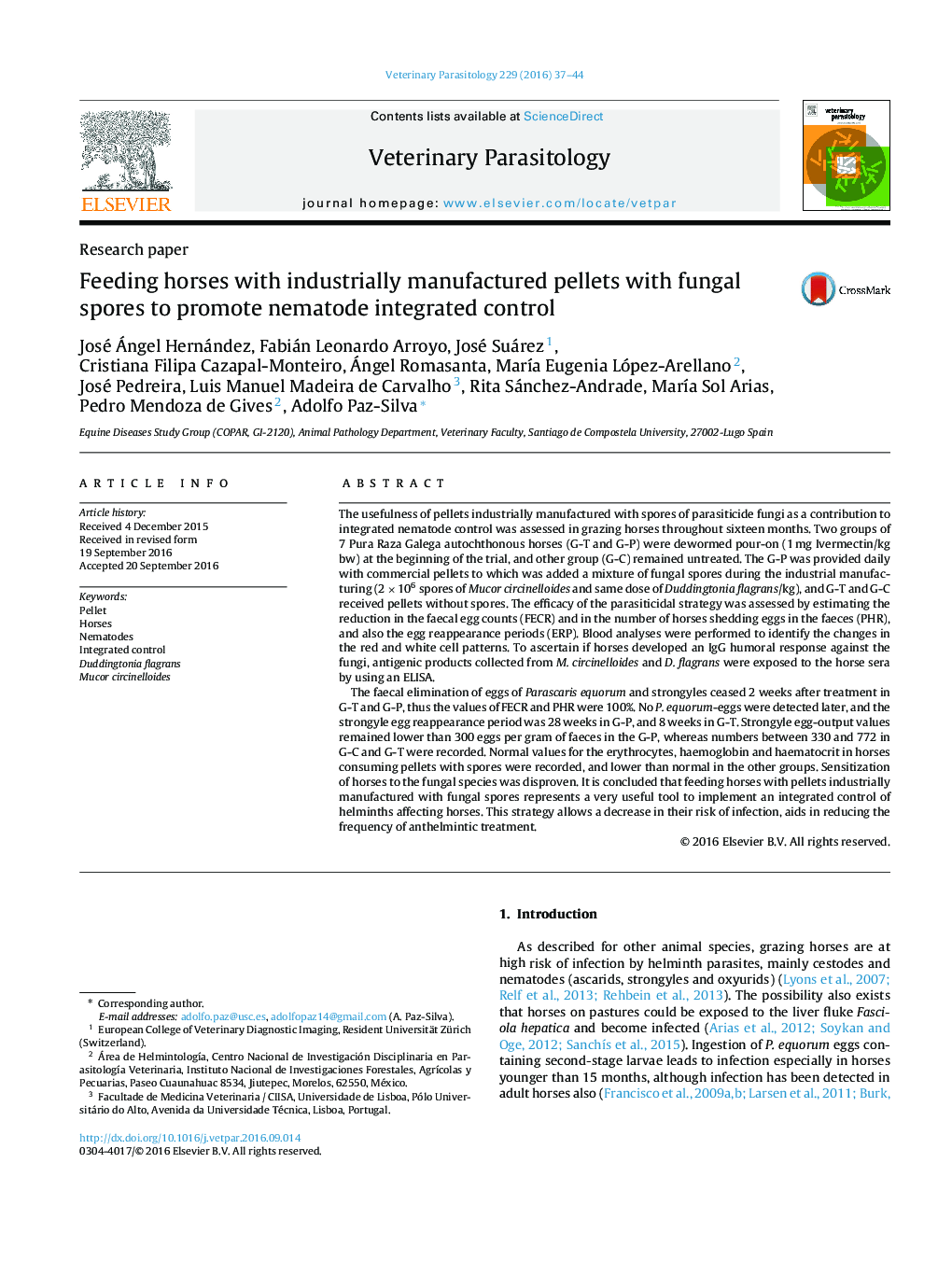| کد مقاله | کد نشریه | سال انتشار | مقاله انگلیسی | نسخه تمام متن |
|---|---|---|---|---|
| 5545958 | 1555647 | 2016 | 8 صفحه PDF | دانلود رایگان |
- An integrated control strategy of horse nematodes has been assayed.
- We manufactured pellets with spores of Mucor circinelloides and Duddingtonia flagrans.
- Horses provided with pellets containing added spores did not need deworming for 15 months.
- Undesirable effects on horses feeding on pellets containing fungal spores were not observed.
The usefulness of pellets industrially manufactured with spores of parasiticide fungi as a contribution to integrated nematode control was assessed in grazing horses throughout sixteen months. Two groups of 7 Pura Raza Galega autochthonous horses (G-T and G-P) were dewormed pour-on (1Â mg Ivermectin/kg bw) at the beginning of the trial, and other group (G-C) remained untreated. The G-P was provided daily with commercial pellets to which was added a mixture of fungal spores during the industrial manufacturing (2Â ÃÂ 106 spores of Mucor circinelloides and same dose of Duddingtonia flagrans/kg), and G-T and G-C received pellets without spores. The efficacy of the parasiticidal strategy was assessed by estimating the reduction in the faecal egg counts (FECR) and in the number of horses shedding eggs in the faeces (PHR), and also the egg reappearance periods (ERP). Blood analyses were performed to identify the changes in the red and white cell patterns. To ascertain if horses developed an IgG humoral response against the fungi, antigenic products collected from M. circinelloides and D. flagrans were exposed to the horse sera by using an ELISA.The faecal elimination of eggs of Parascaris equorum and strongyles ceased 2 weeks after treatment in G-T and G-P, thus the values of FECR and PHR were 100%. No P. equorum-eggs were detected later, and the strongyle egg reappearance period was 28 weeks in G-P, and 8 weeks in G-T. Strongyle egg-output values remained lower than 300 eggs per gram of faeces in the G-P, whereas numbers between 330 and 772 in G-C and G-T were recorded. Normal values for the erythrocytes, haemoglobin and haematocrit in horses consuming pellets with spores were recorded, and lower than normal in the other groups. Sensitization of horses to the fungal species was disproven. It is concluded that feeding horses with pellets industrially manufactured with fungal spores represents a very useful tool to implement an integrated control of helminths affecting horses. This strategy allows a decrease in their risk of infection, aids in reducing the frequency of anthelmintic treatment.
204
Journal: Veterinary Parasitology - Volume 229, 15 October 2016, Pages 37-44
